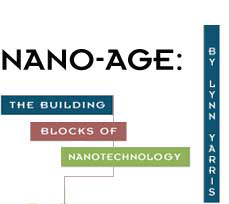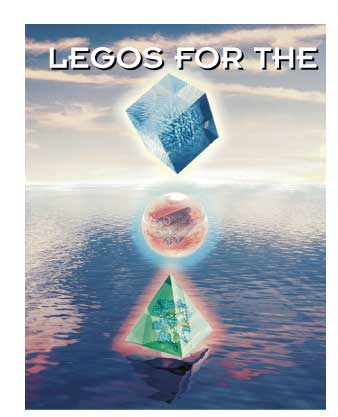| In the coming
age of nanotechnology, scientists and engineers will also be building
some amazingly complex and sophisticated things, things like MEMS
(micro-electromechanical systems), intelligent machines too tiny to
be seen with the naked eye but capable of performing tasks that read
like science fiction. For example, medical MEMS could patrol the human
bloodstream, purging clogged arteries of cholesterol or supporting
the immune system in its fight against "foreign" invaders
such as bacteria, viruses, fungi, and parasites. Air-borne and water-borne
MEMS could monitor and remove pollutants, telecom MEMS might beam
communications signals directly into our eyes and ears from environments
too hostile or remote for human access. MEMS can also be networked.
And they are just one example of the things that are to come. Nanoenthusiasts
also envision chemical input/output systems, mechano-chemical transducers,
light-driven catalysts, and even quantum computers."
To achieve this world of tomorrow, however, scientists and engineers
will need the right combination of building blocks. Designing, synthesizing
and characterizing new types of nano-building blocks will be a major
mission for materials scientists. These building blocks will come
in a variety of shapes and sizes, and will be fashioned from inorganic
or "hard" matter, organic or "soft" matter,
and sometimes from a mixture of both. Time will tell what forms
these building blocks may eventually take, but among the many promising
shapes Berkeley Lab researchers are initially working with three
basic varieties- crystals, tubes, and a tree-like, heavily-branched
class of polymers called "dendrimers."
|

 othing
could be more fundamental than a Lego, the plastic building block
familiar to children around the world. And yet anyone who has ever
walked through an FAO Schwarz store knows that with the right combination
of Lego blocks, you can build some amazingly complex and sophisticated
things-from motorized miniature cars and trucks, to rockets and launchers,
to Star Wars battle droids and other mechanized robot toys.
othing
could be more fundamental than a Lego, the plastic building block
familiar to children around the world. And yet anyone who has ever
walked through an FAO Schwarz store knows that with the right combination
of Lego blocks, you can build some amazingly complex and sophisticated
things-from motorized miniature cars and trucks, to rockets and launchers,
to Star Wars battle droids and other mechanized robot toys.